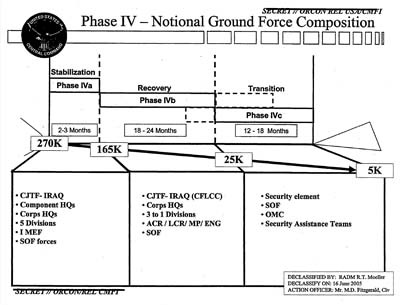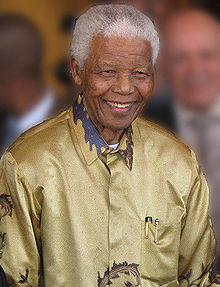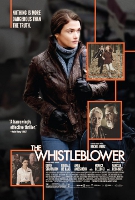Top Secret Polo Step
The PowerPoint slides, prepared by CentCom planners for Gen. Tommy Franks under code name POLO STEP, for briefings during 2002 for President Bush, the NSC, Defense Secretary Rumsfeld, the JCS, and Franks' commanders, refer to the "Phase IV" post-hostilities period as "UNKNOWN" and "months" in duration, but assume that U.S. forces would be almost completely "re-deployed" out of Iraq within 45 months of the invasion (i.e. December 2006).

U.S. Central Command estimated that only 5,000 U.S. troops would remain in Iraq by December 2006.
"Completely unrealistic assumptions about a post-Saddam Iraq permeate these war plans," said National Security Archive Executive Director Thomas Blanton. "First, they assumed that a provisional government would be in place by 'D-Day', then that the Iraqis would stay in their garrisons and be reliable partners, and finally that the post-hostilities phase would be a matter of mere 'months'. All of these were delusions."
The PowerPoint slides reflect the continuous debate over the size of the invasion force that took place within the Bush administration. In late November 2001, President Bush asked Rumsfeld about the status of plans for war with Iraq. He asked for an updated approach, but did not want to attract attention. Rumsfeld ordered Gen. Franks to prepare a commander's estimate of improvements needed, and Franks convened a planning group that adopted the codeword POLO STEP.
POLO STEP was a coded compartment created during the Clinton administration to encompass covert Iraq and counter-terrorism plans and activities. In the mid-1990s, the compartment specifically included the targeting of Osama bin Laden. Following the September 11 attacks, CentCom, among other military and national security components, used the designation to cover planning for the war in Iraq. (Note 1)
In mid-2002, military analyst William Arkin obtained a leaked copy of a briefing on the Iraq plans and revealed the existence of POLO STEP in an op-ed for the Los Angeles Times (June 23, 2002, p. M1). According to Arkin, the revelation unleashed the fury of Gen. Franks and Secretary Rumsfeld who immediately ordered a probe of the leak that lasted until the end of 2003 and subjected more than 1,000 military and contractor personnel to sometimes repeated questioning.
The slides in this Web posting are a compilation reflecting various iterations in war planning. The U.S. government maintains plans for conflict with a multitude of possible adversaries. The contingency operating plan for Iraq--OPLAN 1003-98--had last been fully reviewed in 1996 and was updated in 1998. It envisioned an invasion force of more than 380,000 troops. Former CentCom commander Gen. Anthony Zinni (who saw gaps in the plan--particularly in regard to the post-war order) organized a war game--Desert Crossing--in 1999 to examine additional contingencies.
Under pressure from Secretary Rumsfeld for a leaner force (according to accounts in books by Michael Gordon/Bernard Trainor, Thomas Ricks, and Bob Woodward), Zinni's successor, Gen. Franks, reduced the number to 275,000 in the commander's estimate he gave to President Bush on December 28, 2001. During the course of 2002 alternative versions of the plan were developed reflecting various assumptions about levels of allied support--"robust", "reduced", or "unilateral"--and about the amount of lead time available between the order to invade and the deployment of forces. Under the Generated Start option Bush would have provided CentCom with 30 days notice for war, and 60 days to deploy. Following Rumsfeld's mandate to reduce deployment time to prepare for any contingency, Franks developed the alternative Running Start option: conflict would begin with escalating Red, White, and Blue air strikes followed by ground war as troops were deployed. By mid-August 2002 a Hybrid concept had been developed--the U.S. military would quickly mobilize forces in the region, initiate an air strike campaign, then launch a ground invasion.
One account written after the war points out a basic problem with the concept of scaled-down ground forces - a "contradiction" between ends and means (Michael R. Gordon & Gen. Bernard Trainor, Cobra II, pp. 503-504):
"Bush, Cheney, Rumsfeld, and Tommy Franks spent most of their time and energy on the least demanding task - defeating Saddam's weakened conventional forces - and the least amount on the most demanding - rehabilitation of and security for the new Iraq. The result was a surprising contradiction. The United States did not have nearly enough troops to secure the hundreds of suspected WMD sites that had supposedly been identified in Iraq or to secure the nation's long, porous borders. Had the Iraqis possessed WMD and terrorist groups been prevalent in Iraq as the Bush administration so loudly asserted, U.S. forces might well have failed to prevent the WMD from being spirited out of the country and falling into the hands of the dark forces the administration had declared war against."
In the end, Secretary of State Colin Powell and British Prime Minister Tony Blair persuaded President Bush that the U.S. needed to go to the U.N. to try to legitimize the invasion. Diplomatic efforts over the next few months allowed more time for war preparations and the final option embraced by Rumsfeld - Lt. Gen. David McKiernan's Cobra II - was closer to Generated Start, the original plan, than the various iterations that were subsequently developed and are reflected in the declassified PowerPoint slides.
Read it all and get the files @
sfux - 20. Feb, 21:08 Article 2398x read
















































